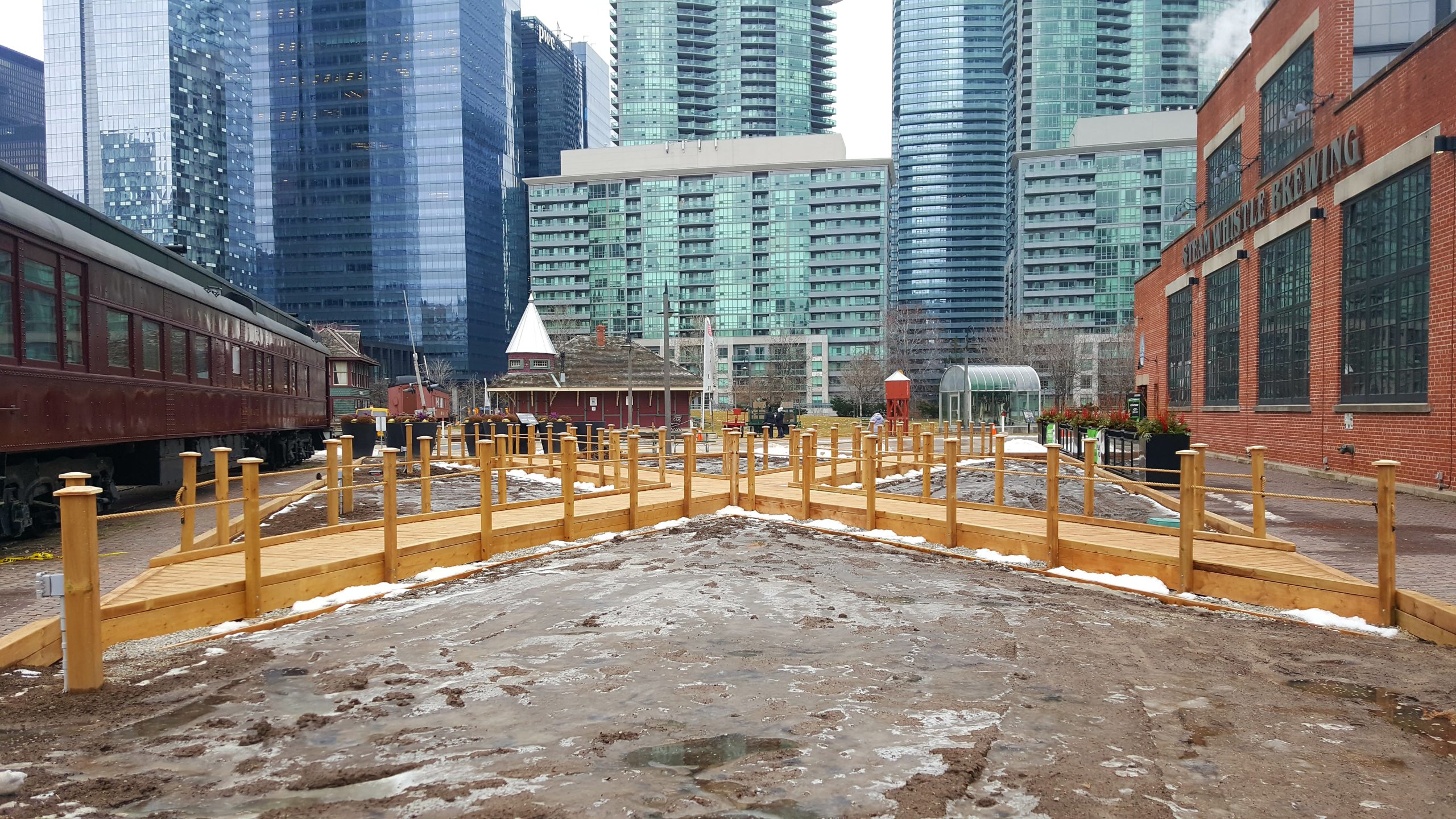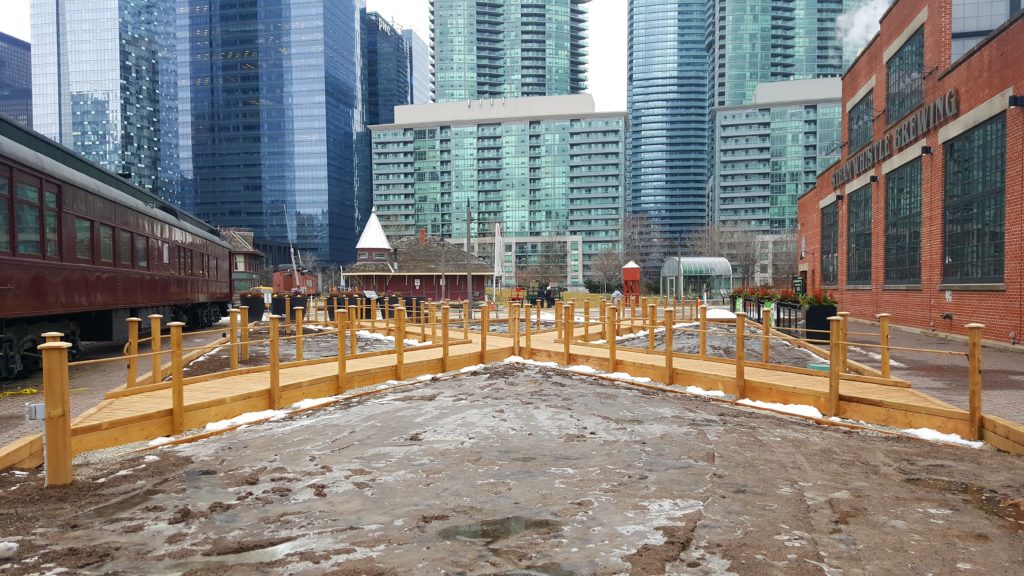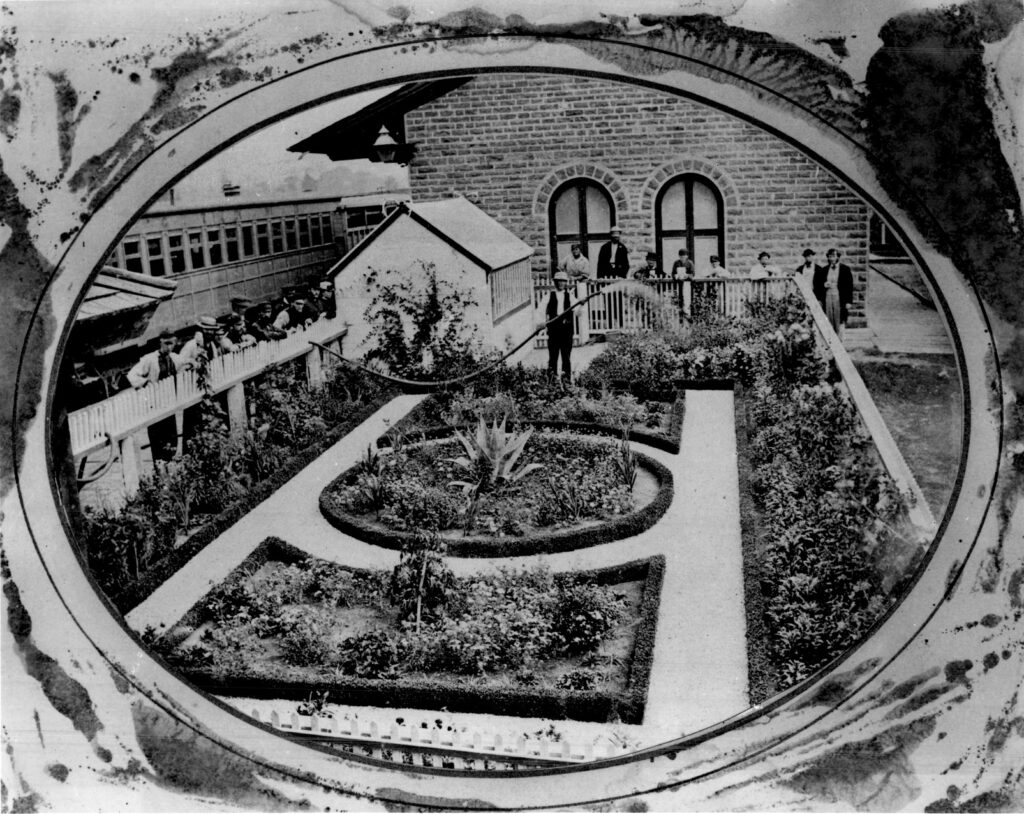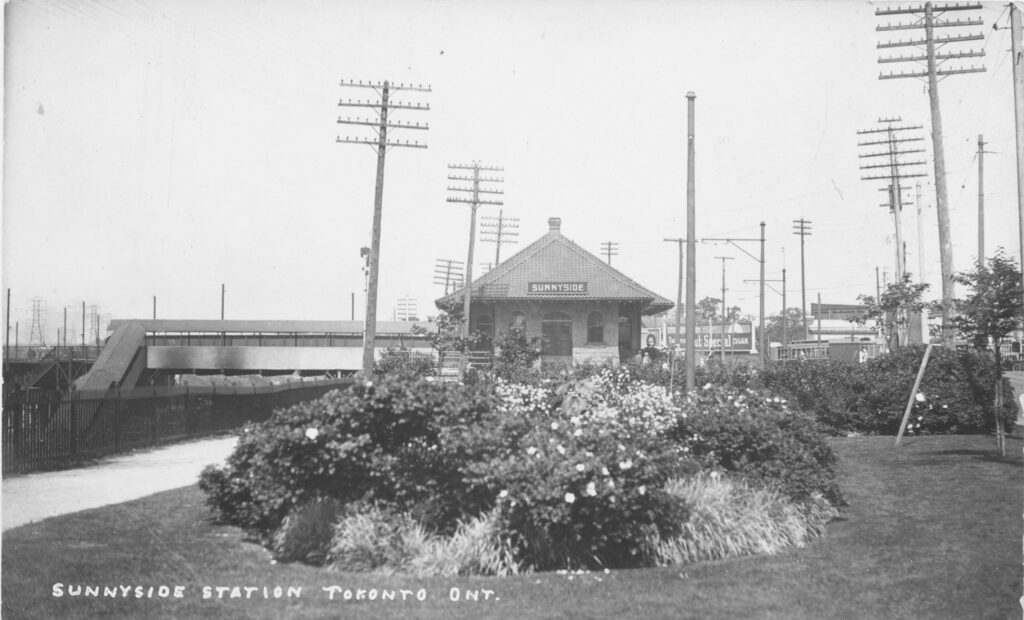With the help of Toronto Parks, Forestry & Recreation, an X-shaped boardwalk was constructed in the area between our Cape Race passenger car and the north-facing wall of Steam Whistle Brewing in late 2019. The proposal for this garden was initiated by volunteer and advisory board member Lorne Charenko and served as a solution for an area that frequently experienced poor drainage. It maintains accessibility for park visitors while also significantly beautifying the area. Beyond the X shape of the boardwalk resembling the unmistakable design of a railway crossbuck, gardens were once commonplace on railway property in North America and our railway garden allows us to continue this long-standing tradition.
History of Railway Gardens
Using gardens to beautify the surroundings of railway buildings is a concept that goes back almost as far as Canada’s first railways. It was common for a passenger station to have an adjacent garden that would be tended to by the station agent. This practice originated in Europe, but the Grand Trunk Railway is credited with bringing it to what was then the Province of Canada over 160 years ago. Some of the first gardens were established adjacent to passenger stations on the Grand Trunk mainline between Toronto and Montreal upon its opening in 1856. The practice became so widespread among Canadian railroads that by 1920 the Canadian Pacific Railway had an entire horticultural department and over 500 employees across their system who tended to the gardens. Each division on the Canadian Pacific system would also regularly hold garden competitions. Whether to beautify the industrial landscape of Canadian cities in the Victorian era or to promote the fertility of the land for new settlers, the station garden served an important purpose.





